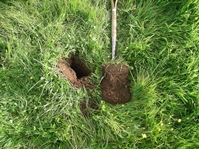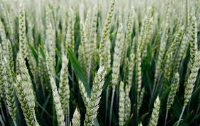Soils emit greenhouse gases such as Carbon Dioxide (CO2), Nitrous Oxide (N2O) and Methane (CH4). The largest emissions from soils are as CO2 as a result of respiration by soil microorganisms from the decomposition of the active Soil Organic Matter (SOM) pool.
Agriculture and forestry influence the rates of carbon addition and losses to the SOM. Organic carbon and therefore, SOM levels largely depend on vegetation cover and type of plant (root depth and spatial distribution), along with any land use changes. The most significant effect upon the carbon content of the soil is from mechanical cultivation. By cultivating soils the disturbance allows for greater oxidation of the soil profile, therefore promoting the fast metabolism of aerobic species of microorganisms which consequently releases CO2 as a by-product of respiration. Consequently, depending upon a number of factors such as previous cropping, soil type, intensity of cultivation and moisture content, cultivated soils can lose approximately 3 tonnes of soil carbon/ha/year.
This active SOM pool has carbon constantly being added to by plants from their residues, roots and exudates, as these plants take CO2 from the atmosphere to produce simple carbohydrates and all other organic compounds that enable them to grow. The additions and losses of carbon are relatively equal in a steady state system with a (very) gradual increase in SOM. Soils can thus contain between 30 – 90 tonnes of carbon/ha at 30cm depth.

The highest losses of SOM occur in the first year of ploughing out a permanent pasture and if cultivation continues over the next 25 years and can result in 25–40% of the original soil carbon being lost depending on the soil type. Soil surveys in England and Wales from 1978 – 2003 estimated that soil organic carbon decreased over that time by 0.6% per year, which would equate to a loss of 4.4 million tonnes of carbon/yr. Furthermore, where SOM levels were higher than average, the rate of loss of soil carbon was also greater, as much as 2% per year.
Peat soils and soils with very high levels of SOM (>10% SOM) pose additional GHG challenges. Because of the very high levels of SOM, if these soils are cultivated (or drained) the resulting GHG emission can be 4x higher than the same action on an ‘average’ 5% SOM soil.
Arable Farming Techniques for Building Carbon
In many arable systems, mechanical cultivation creates disturbance and consequent oxidation of the soil thereby depleting SOM by microbial action. Where land is under continual cultivation, as is much of UK arable land, reducing the frequency, depth and intensity of cultivations will reduce this soil carbon loss. Changing the crop establishment system to reduce the frequency and intensity of cultivations will provide an immediate reduction in farm GHG emissions.
Depending on the a number of factors, primarily preceding cropping, soil type, intensity of the cultivation and moisture content, cultivated soils can lose 3t of soil carbon/ha/year.
Techniques for arable cropping with no cultivations, known as reduced/ zero tillage are being practiced in the UK. A 2019 report from Defra stated that approximately 50% of the total SOC accumulation (after 100 years) occurs within the first 20 years after converting to reduced tillage soil management. Maintaining SOC at the new equilibrium level then becomes the main priority, which may be dependent on continuing or finding new management practices. However, there is very little data yet to assess what is happening to the SOM under these systems. For more information on how tillage methods can affect soil carbon content read our latest article via here.
This evidence demonstrates how changes in land use (grassland to cropping, cropping to forestry etc) has a significant global impact on GHG emissions both in terms of its source and sink. Recently the UK has been a net ‘sink’ for carbon, however, since 2008 there has been no significant changes in emission reductions from the agricultural sector as a whole, largely due to high demand and intensification of food production.

Grassland farming techniques for building carbon
See our Case Studies section for examples such as at Woodland Valley Farm. Techniques include optimising stocking rates, appropriate sward species and root depth, and adopting permanent pasture.

